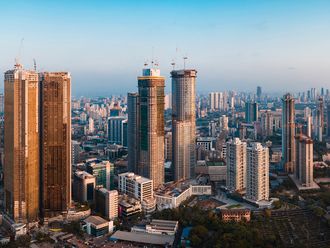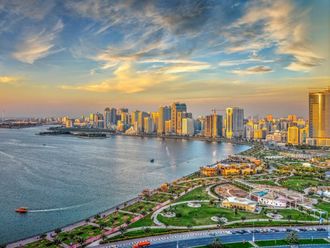
Dubai: Abu Dhabi’s newly created Rental Index will come in handy with another 2,500 plus apartments and 1,000 villas getting completed this year, with a sizeable number of these homes being rented out.
The Abu Dhabi Rental Index sets clear benchmark pricing for all the main residential locations in the city as well those in Al Ain.
For instance, a two-bedroom apartment on Saadiyat Island (SDN1 sector) is rated at Dh138,614 on the Rental Index, while a two-bed option on Reem Island (Sector RR2) shows up at Dh59,476 annually. Now, if it’s a more affordable option the resident is looking at, Mohamed Bin Zayed City’s ME10 sector hs current rental rates on a two-bed unit set at Dh33,165.
It was this week that the Abu Dhabi Real Estate Centre announced the introduction of the Rental Index. "The prices shown represent the average rental value for the area where the unit is located and are subject to change depending on the property,'
Property market sources say that the biggest impact of this introduction will be felt on new rental contracts and price setting rather than on renewals. “Abu Dhabi’s got a significant number of handovers coming at locations on Yas, Saadiyat and Al Maryah,” said a leasing agent. “By setting defined rental rates for property types, the Rental Index should rein in sharp increases in rent demands.”

This (Rental Index) initiative will increase the attractiveness of the real estate sector and contribute to our efforts to create a more sustainable and resilient market
Each of the areas have been assigned specific rents depending on property type and the sector in which it falls within a wider location. (It can be seen on adrec.gov.ae. The prices shown represent the average rental value for the area where the unit is located and are subject to change depending on the property, ADREC has stated.)
Under Abu Dhabi rules, new leases are based on what’s prevailing in the market at that moment. In this regard, market sources say, the rental Index does provide clear guidelines for what landlords can set and what tenants can expect to pay. “The Abu Dhabi residential rentals remain on an upward trend, with apartment rents increasing by 6.6 per cent year-on-year and villas up by 2.4 per cent,” said Prathyusha Gurrapu, Head of Research at the consultancy Cushman & Wakefield.
What does the rule state on rent increases for renewals?
With renewals, landlords in Abu Dhabi must stick to nothing more than a 5 per cent hike on contract renewals, as per existing rules.
Under Article 16, ‘The landlord may not increase the rent specified in the contract except once each year by no more than 5 per cent. It is permissible, by decision of the Chairman of the Executive Council, to increase, to decrease or cancel this percentage as deemed appropriate.
“Individuals concerned may resort to the (rental disputes) committee if the landlord has exceeded the defined percentage.”
The committee also has the right to reduce the rate of increase to the legal limit - and impose a fine of no more
than the one year's rent on the landlord in the event he exceeded the set percentage increase. Or where the landlord is found be non-compliant with the Committee's resolution to rectify the breach. “The Committee may impose this fine of its own accord even if this is not requested by the stakeholder,” the rule states.












